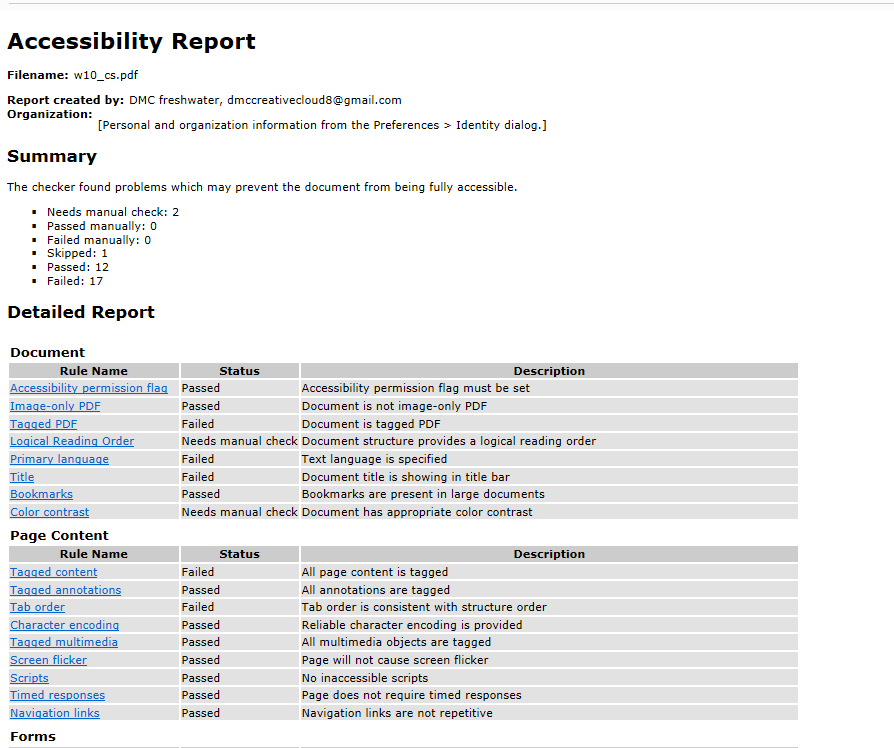Accessibility checkers are fantastic tools to make sure that documents and websites can be accessed by persons with disabilities. Will a screen reader be able to read all the text in your doucument? How about images – are their meanings conveyed to users who can’t actually see them? Is there sufficient colour contrast on your website so users with colour blindness can see it? Are your videos closed captioned for people with hearing loss? Lots of things to consider!
Take a document of your choosing (Word, Excel, PowerPoint, or PDF) or a website and run it through an online accessibility checker. Here are some to choose from:
– Windows Accessibility Checker (and what the various errors/warnings mean for Word, Excel, PowerPoint, Outlook, and OneNote
– Web Accessibility Evaluation Tool – for websites
– Acrobat’s Accessibility Tool – for PDFsWhat did it flag as errors/concerns? What surprised you most about the feedback? How can you accommodate these issues in future documents/sites you create?

- I tested Acrobat’s Accessibility Tool for PDF’s.
I checked it on a few different types of PDF and the feedback I got from them is amazing.
I could see that Acrobat has done a good job at an in-depth analysis of the PDF document to make sure it meets the common accessibility standards. I ran a few different types of documents through it, one of them was a story book (Harry potter 1), and other was this week’s CS challenge. The book passed with a few errors, mostly the title page had bar-codes and images as it couldn’t identify the text in it.
The Cs challenge however, was filled with many errors; the tool skipped around 17 errors and identified them with a failed status- describing the reason for the error. The wordings didn’t make sense and the challenge had many tables and list items. All of these were skipped.
The accessibility tool is user friendly and is a good tool to have for general documents. It might be difficult to open other genres which have complicated values, tables and graphs.